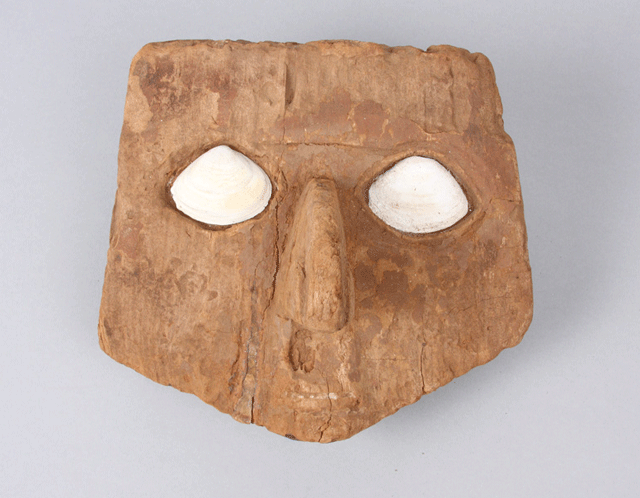


70.64.2, mask from a mummy bundle; wood, seashell eyes, and paint
Chancay Culture, Peru (A.D. 1100–1440)
Greg LaChapelle collection
Photograph by B. Bernard
Members of this culture were buried in bundles consisting of multiple layers of cloth, with masks to indicate the individual's face. The extreme dryness of the Peruvian coast led to the natural mummification of the individuals and the preservation of the cloth and death masks. Only traces of the paint are left, however.
Archaeologists often encounter human burials, and the Maxwell Museum's collections include both human skeletal collections and the objects placed in burials by grieving relatives. The display of actual human remains was common in the past but is now considered a form of sensationalism (and possibly offensive for other reasons as well), so the Museum does not display human remains. The display of funeral objects can also be considered offensive—Native North Americans generally feel that way, for example—so the Museum is careful about which funerary objects it does or does not display. You will find no known examples of funerary objects from the U.S. in this online exhibit, but a South American example allows us to remind our online visitors about death's important role in the story of culture. The mask is 21 centimeters (8 ¼ inches) tall.
To return to the previous page, please click on your browser's "back" button, or click here.
All content copyright © Maxwell Museum of Anthropology, University of New Mexico. High-resolution versons of photographs may be ordered from the Maxwell Museum's photo archives. Please make note of the catalogue numbers. For more information please visit the photo archives web page
Page last revised on March 5, 2010. Please report problems to toh@unm.edu